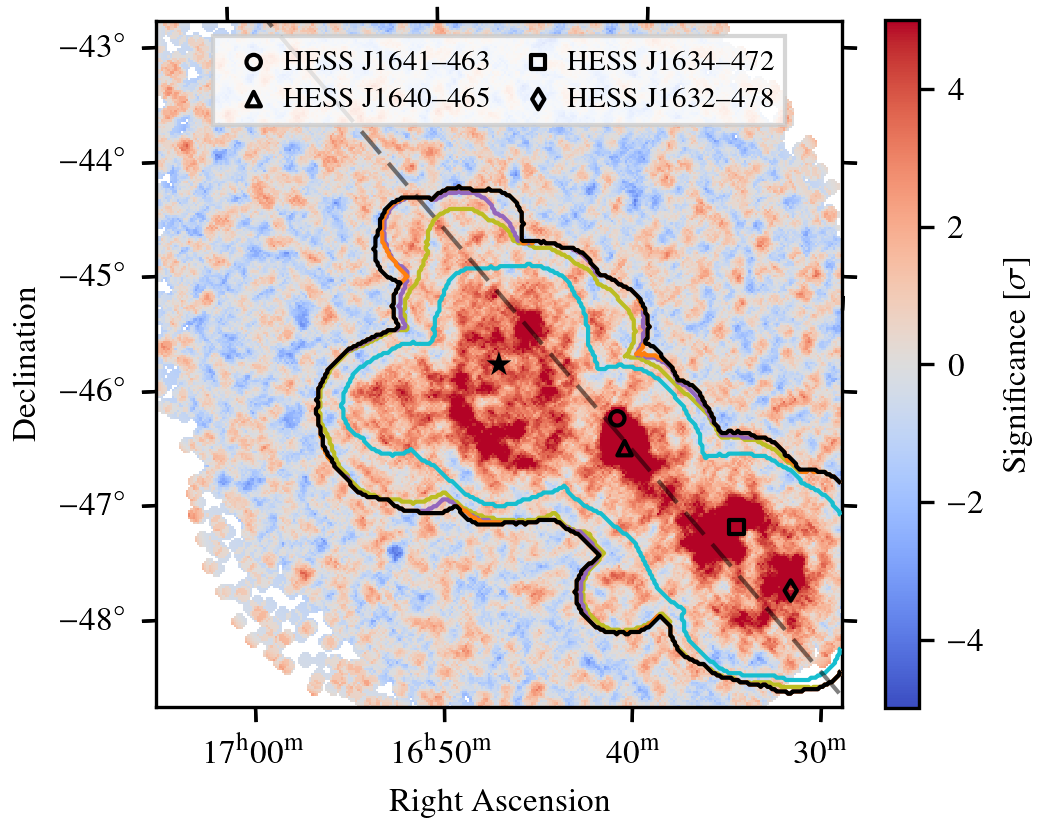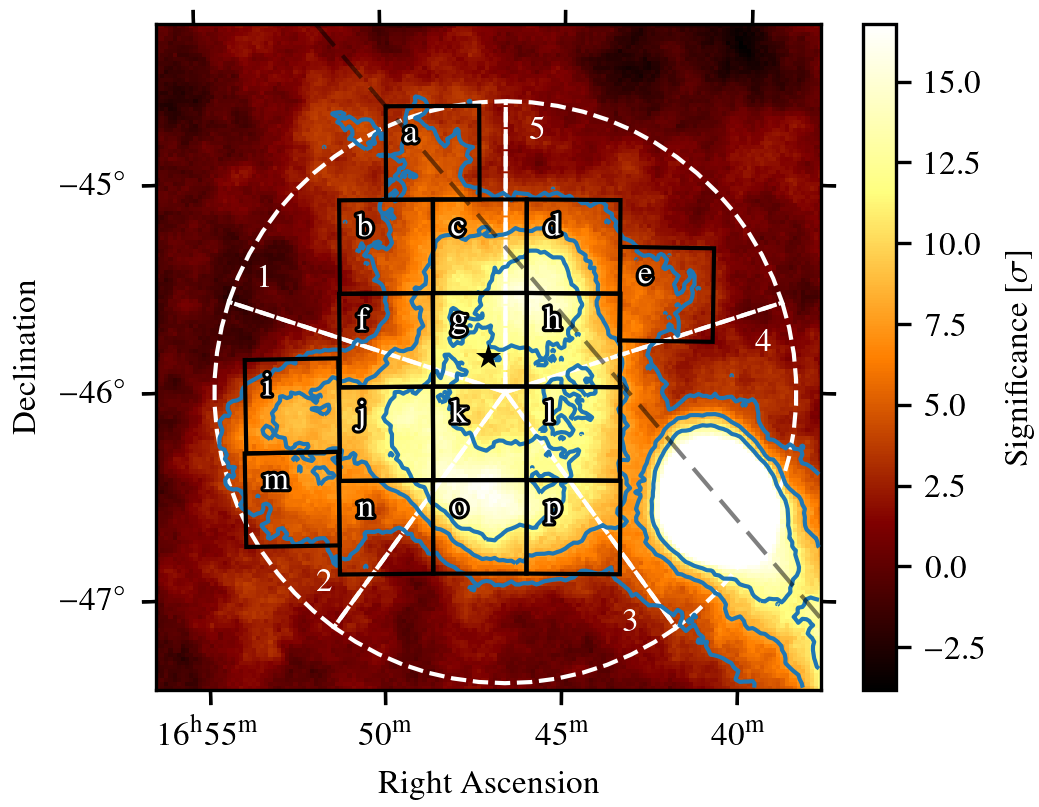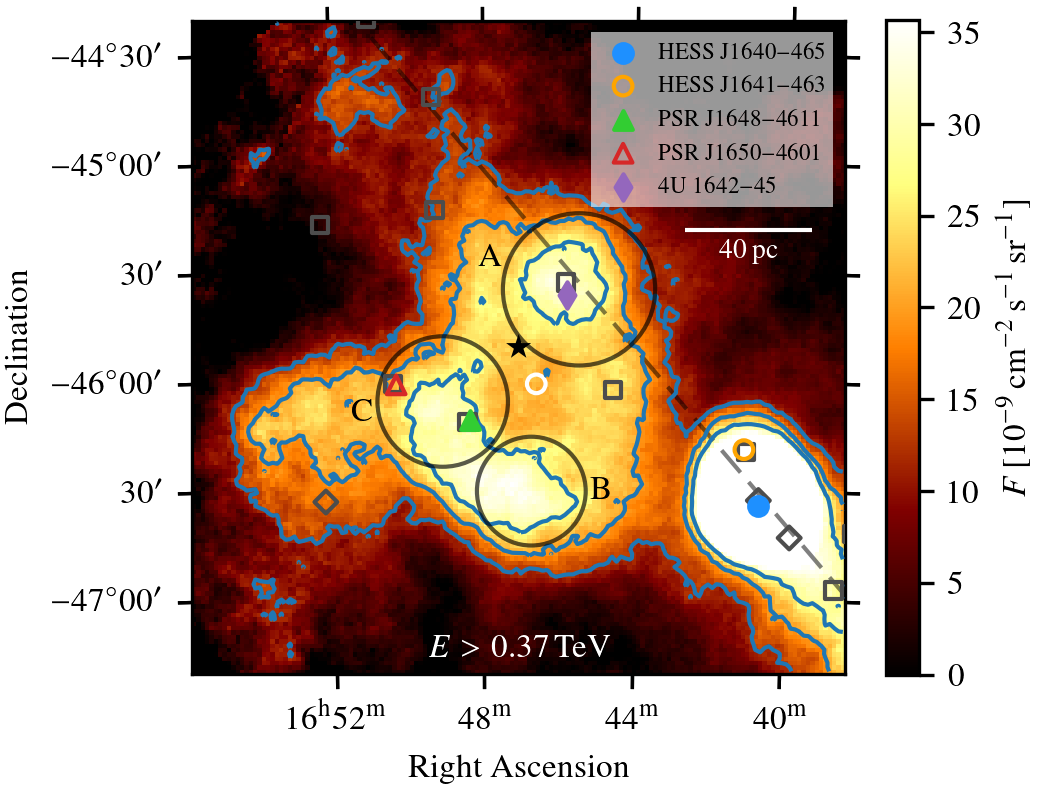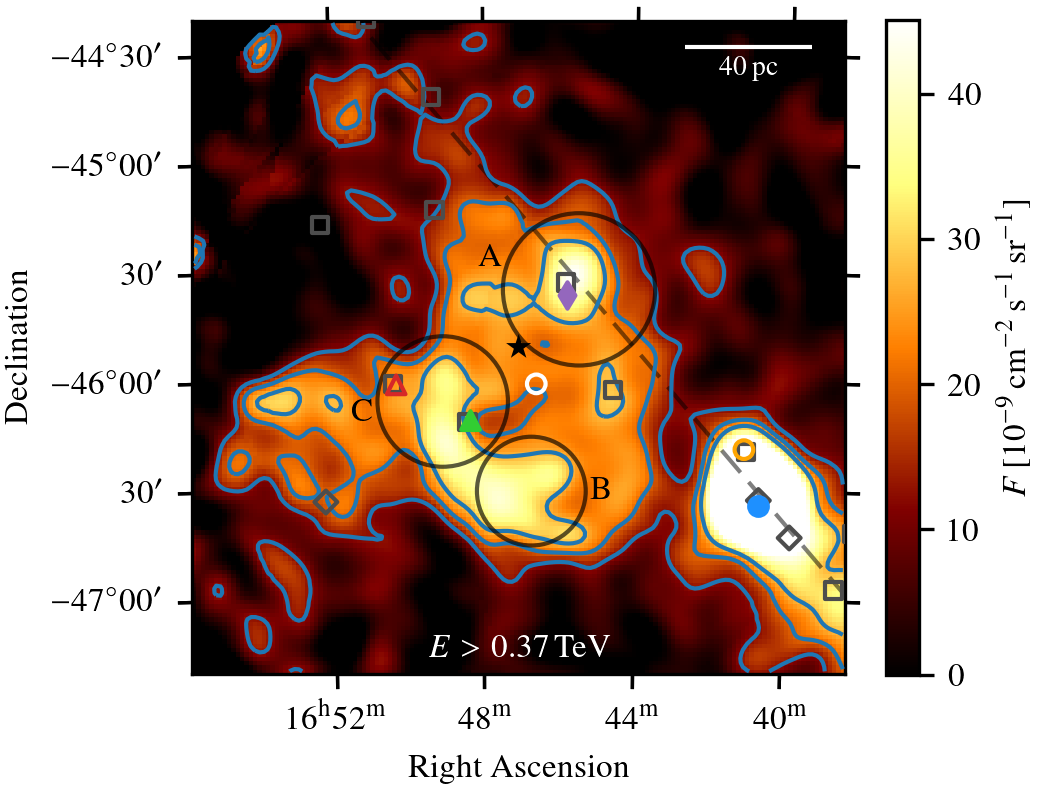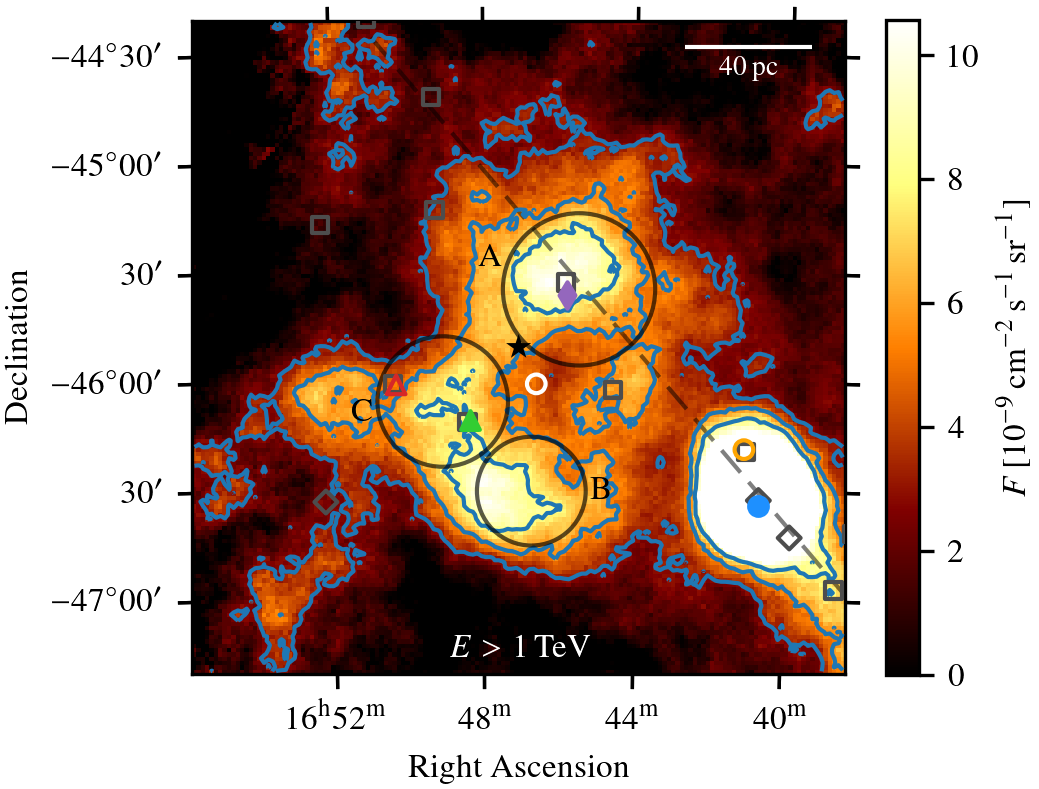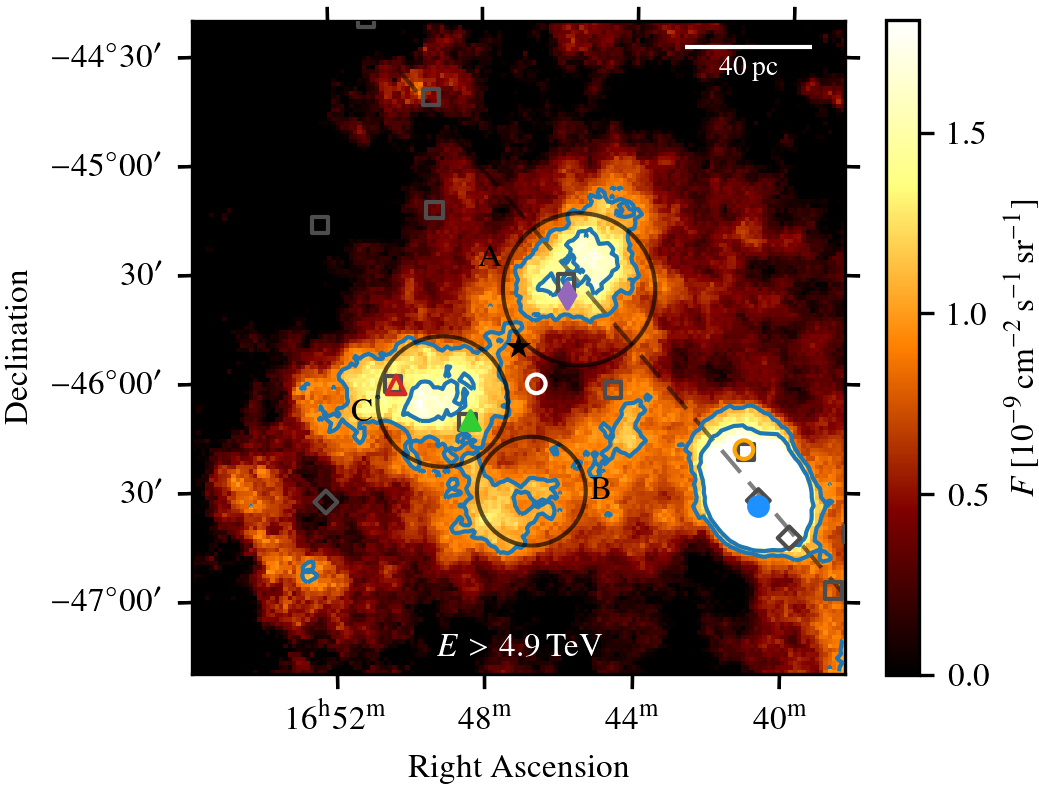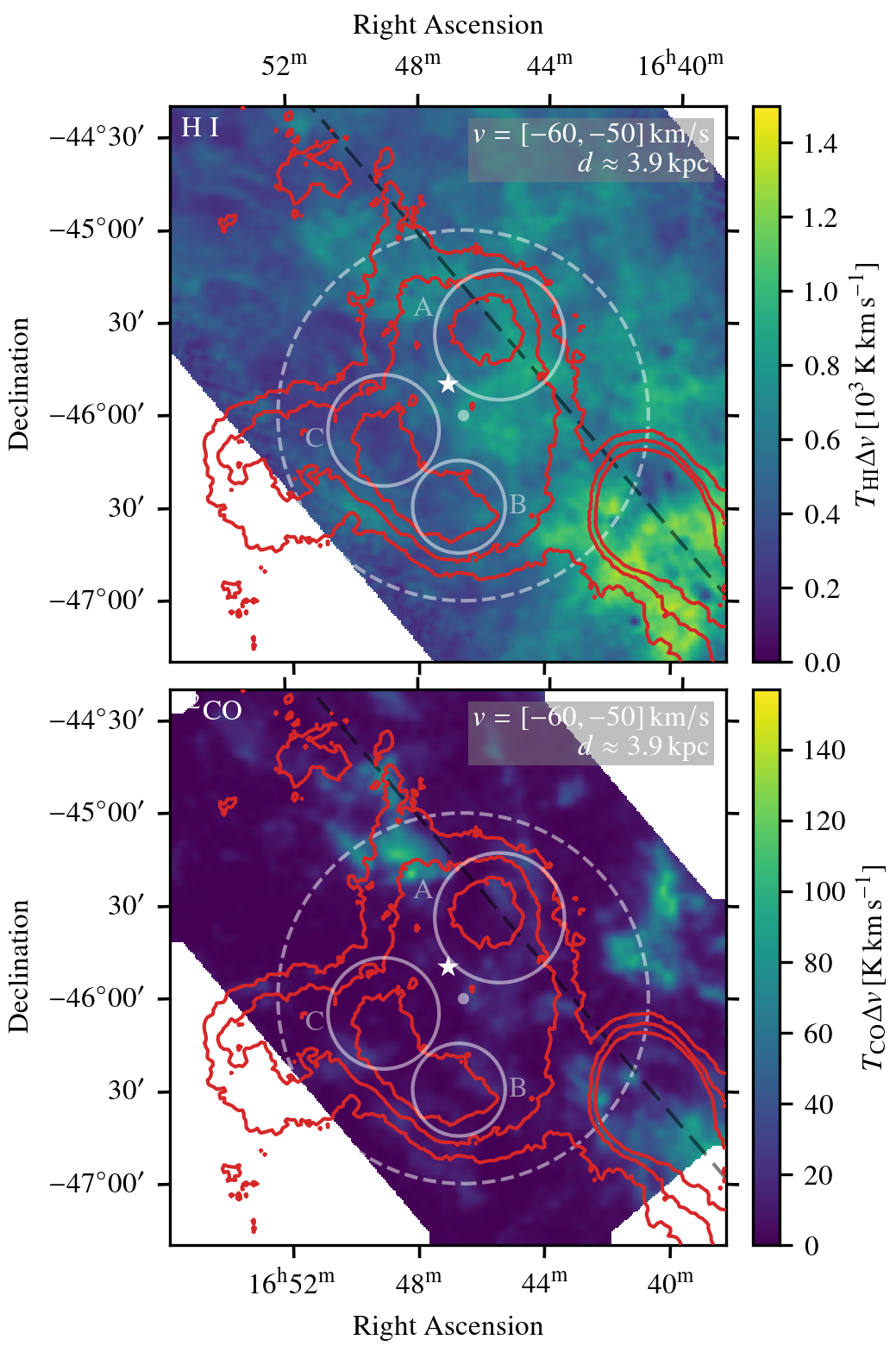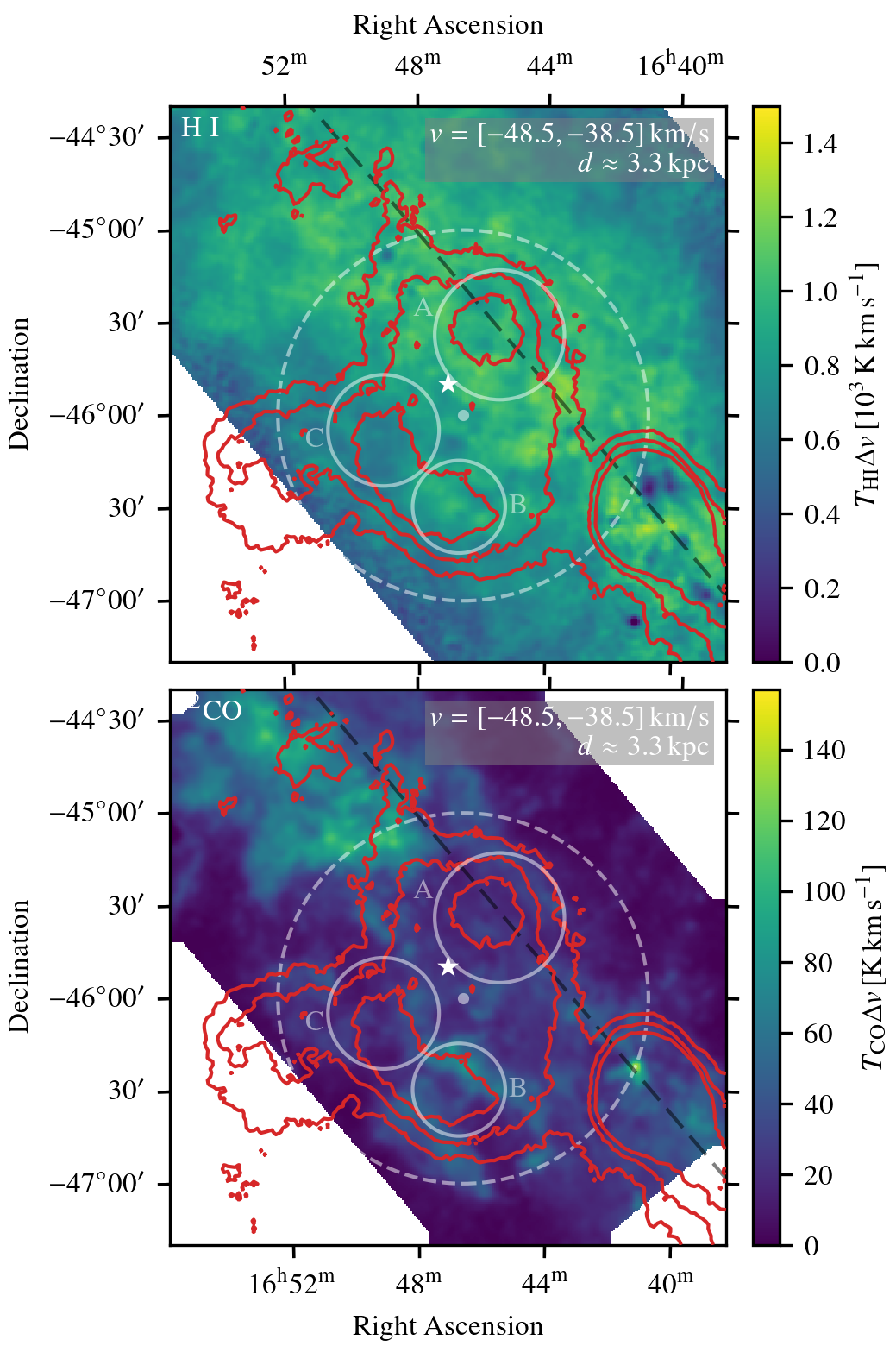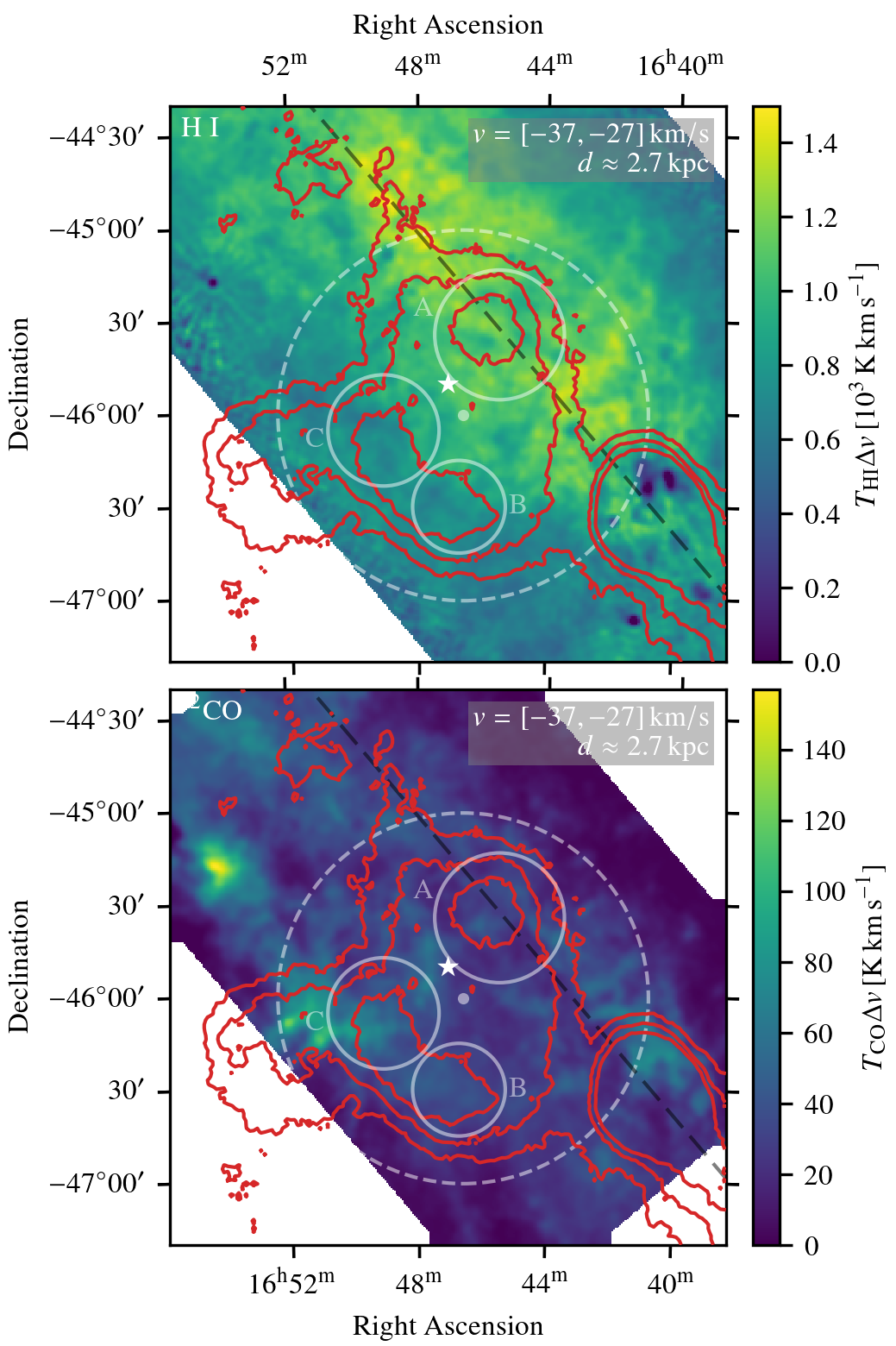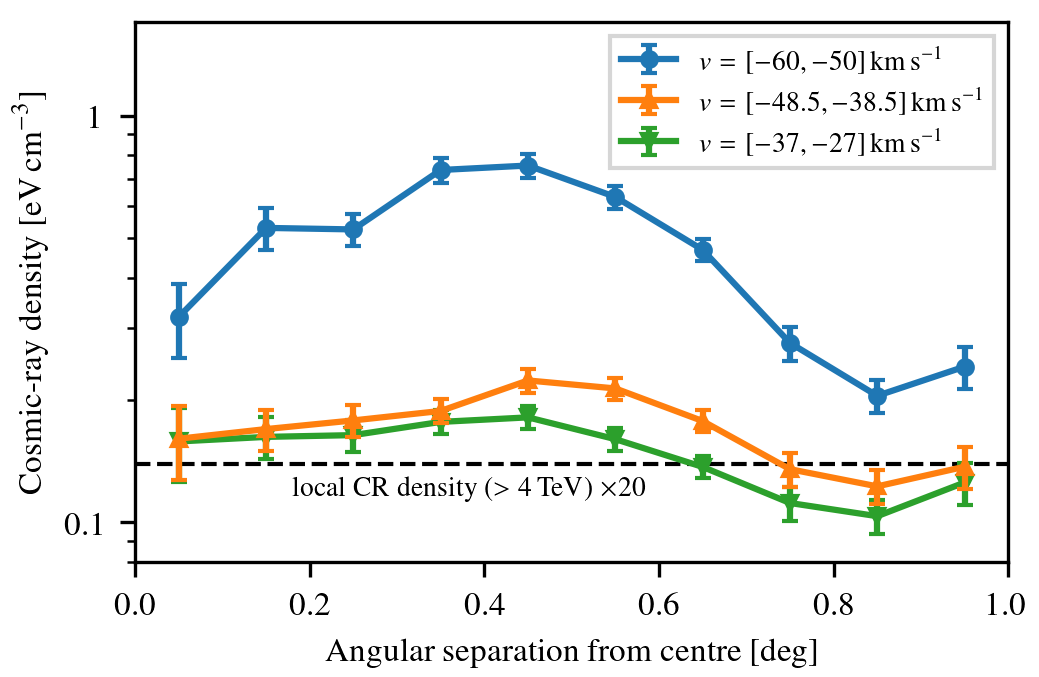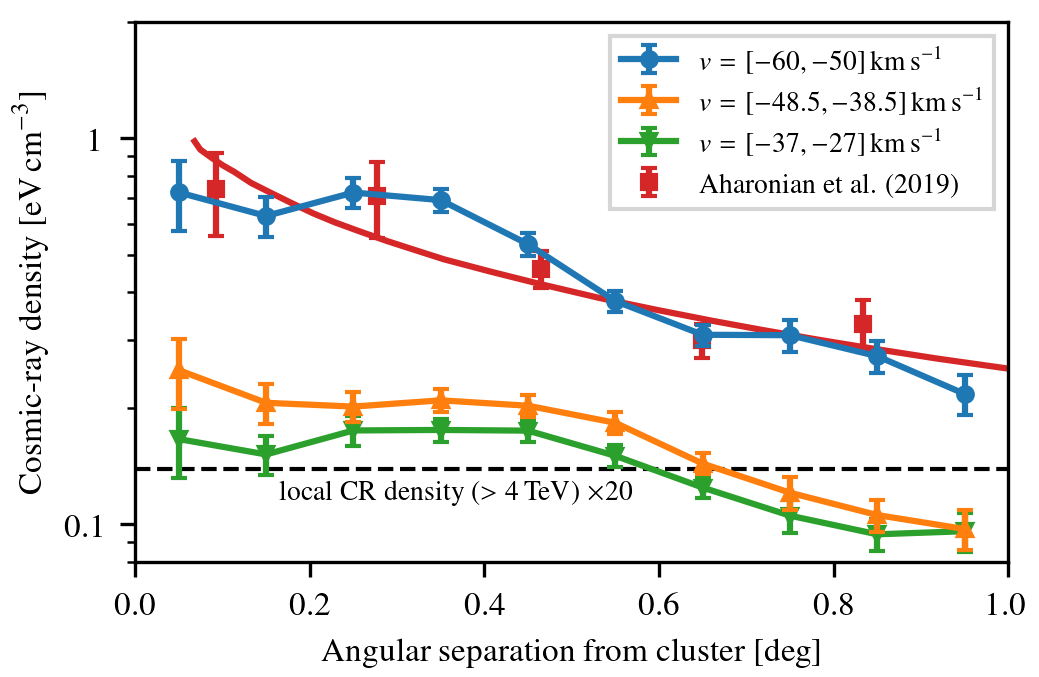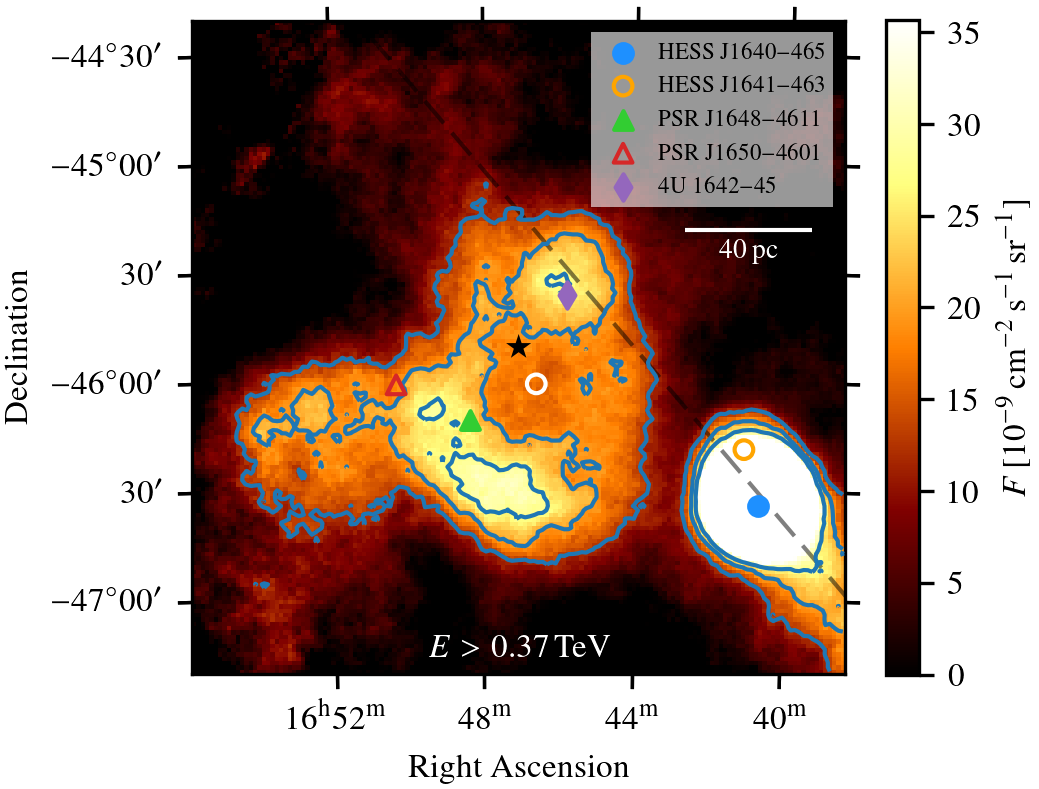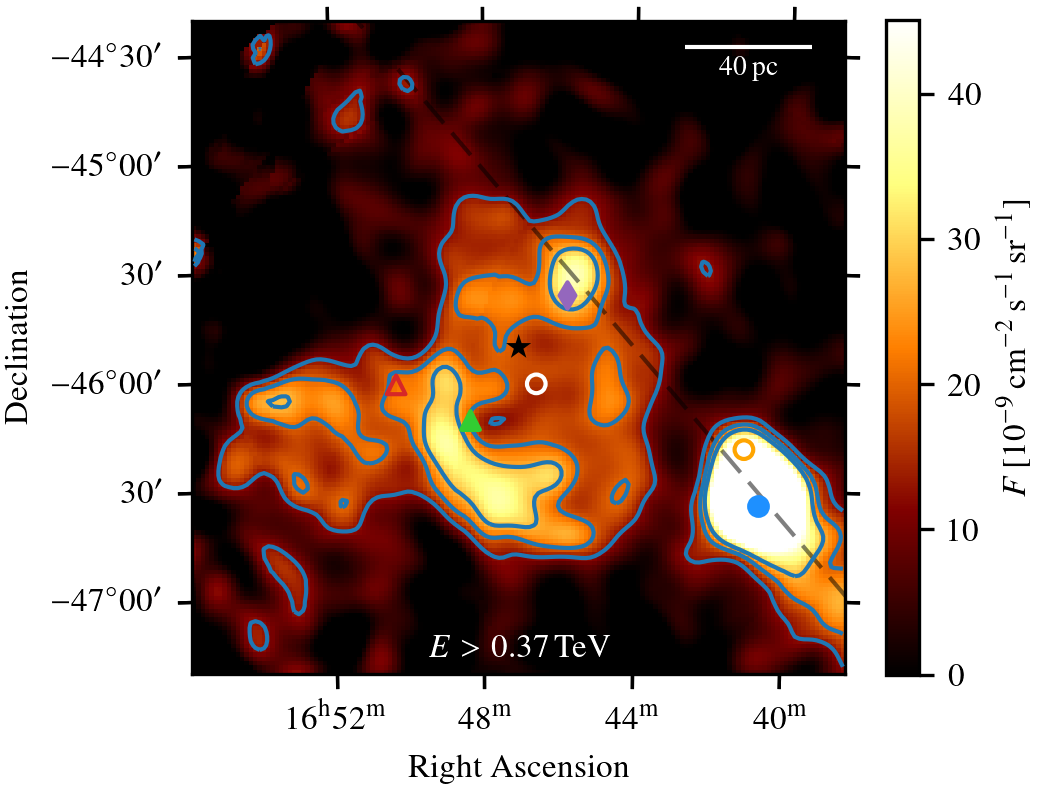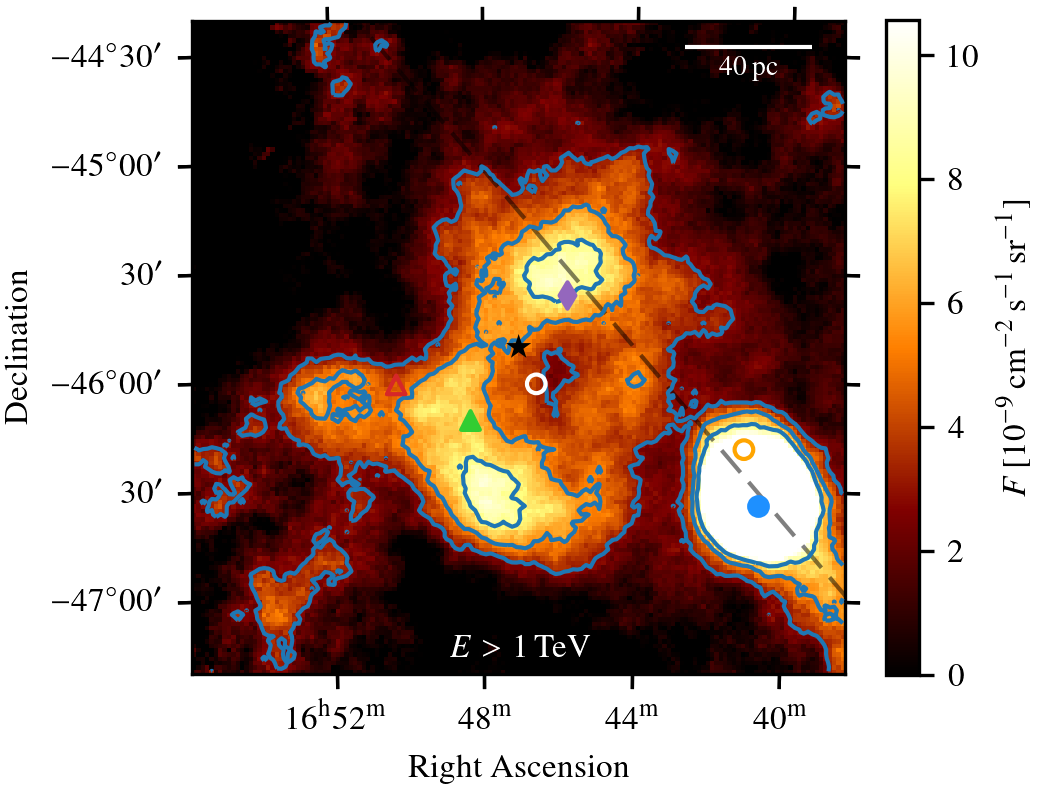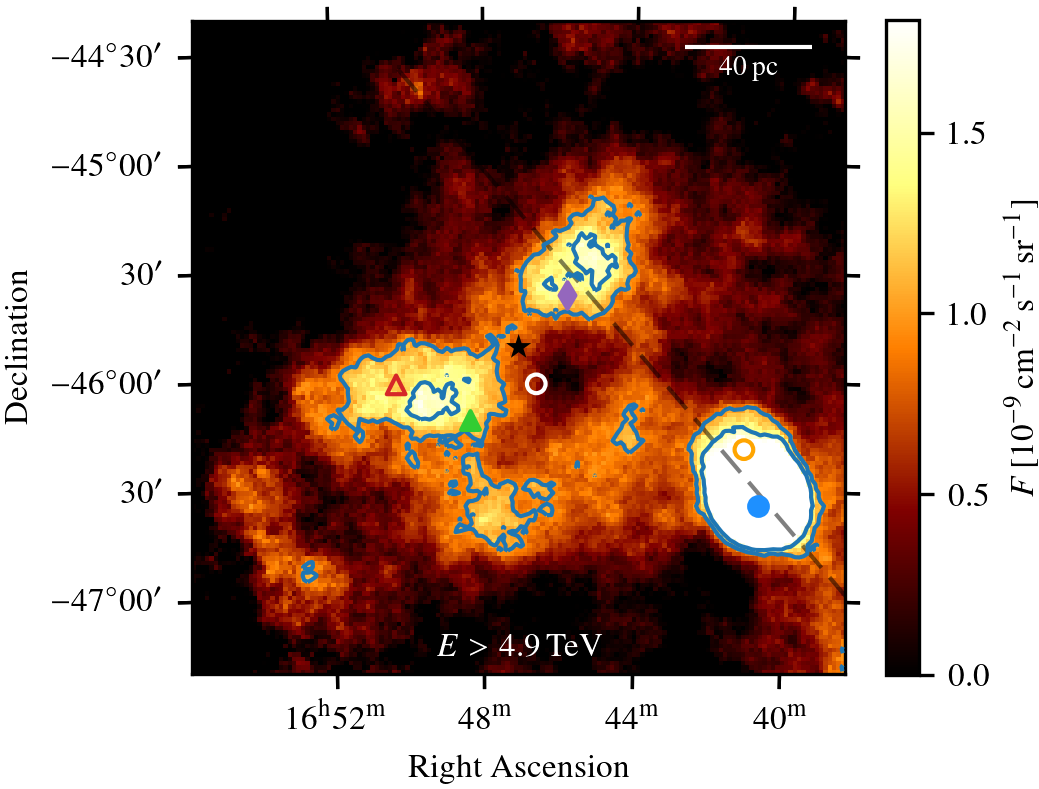Auxiliary information for "A deep spectromorphological study of the γ-ray emission surrounding the young massive stellar cluster Westerlund 1"
(accepted in Astronomy & Astrophysics (2022))
Link to the paper: https://doi.org/10.1051/0004-6361/202244323
Figure 1
Significance maps after background subtraction
Figure 2
Significance entry distribution
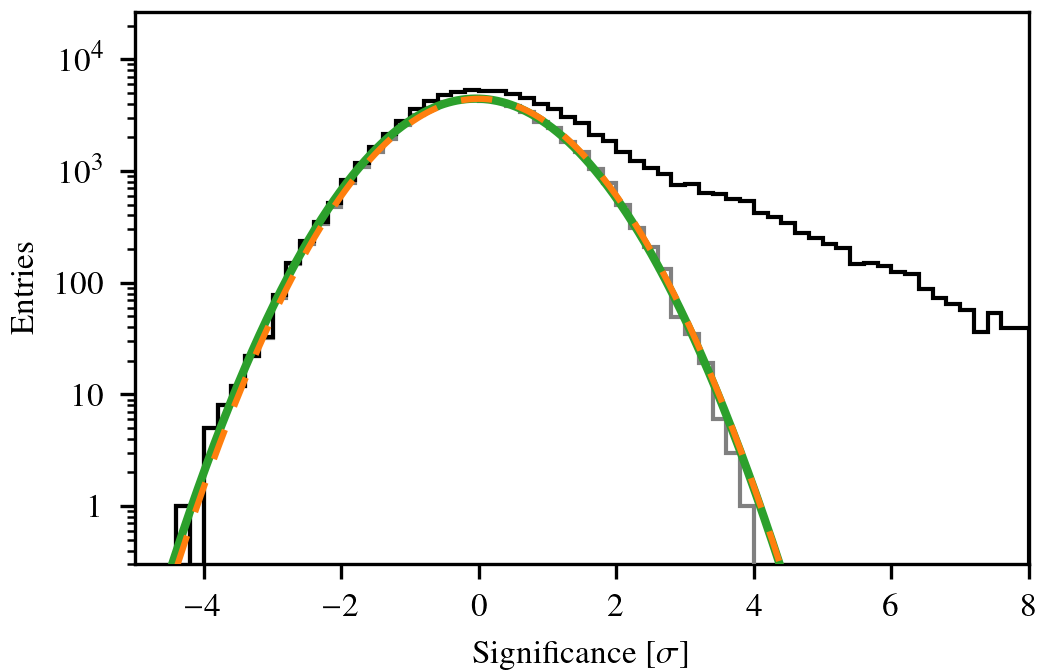
[PDF]
Figure 3
Flux maps of the HESS J1646–458 region.
Figure 4
Radial excess profiles.
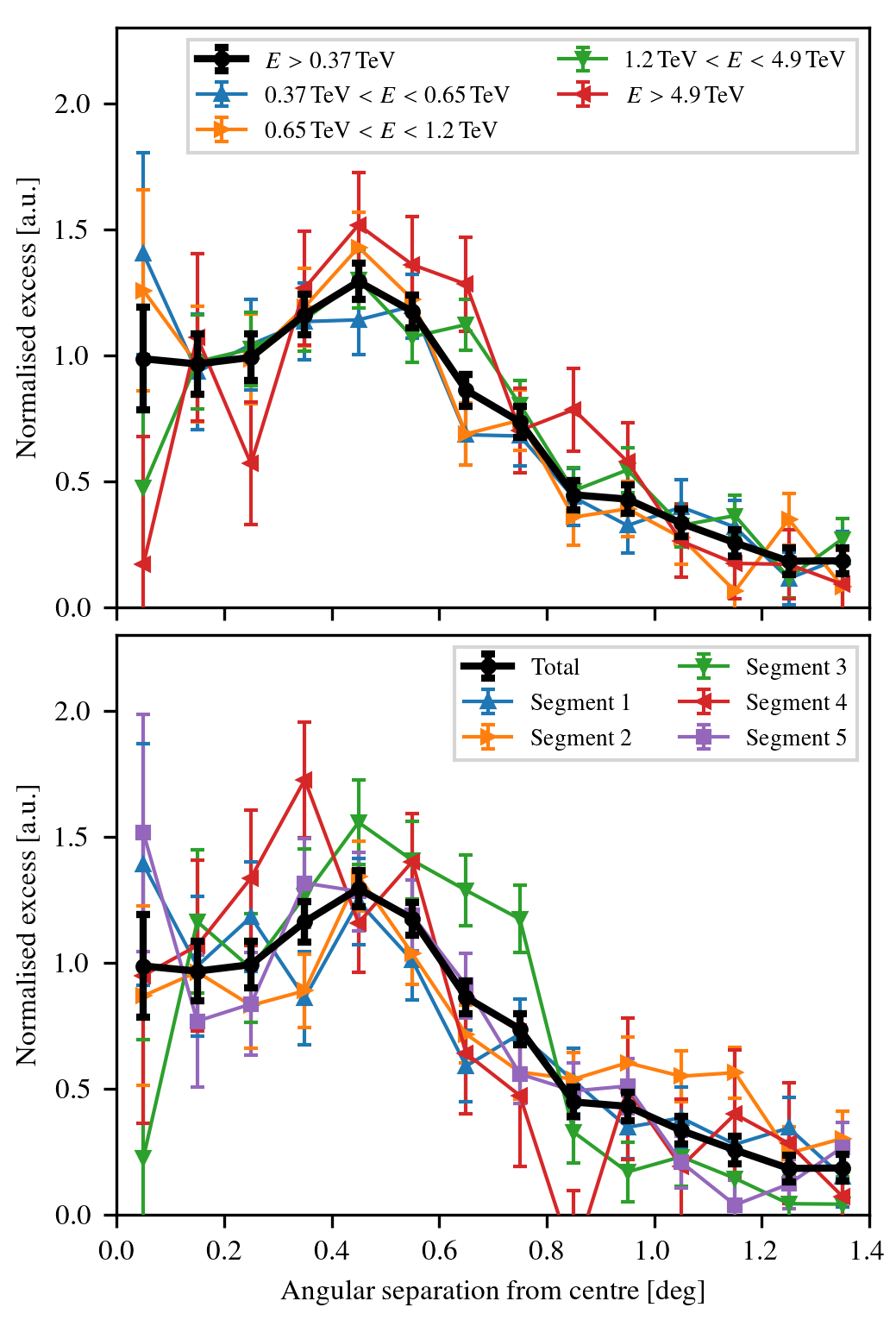
[PDF]
Figure 5
Comparison of signal region spectra.
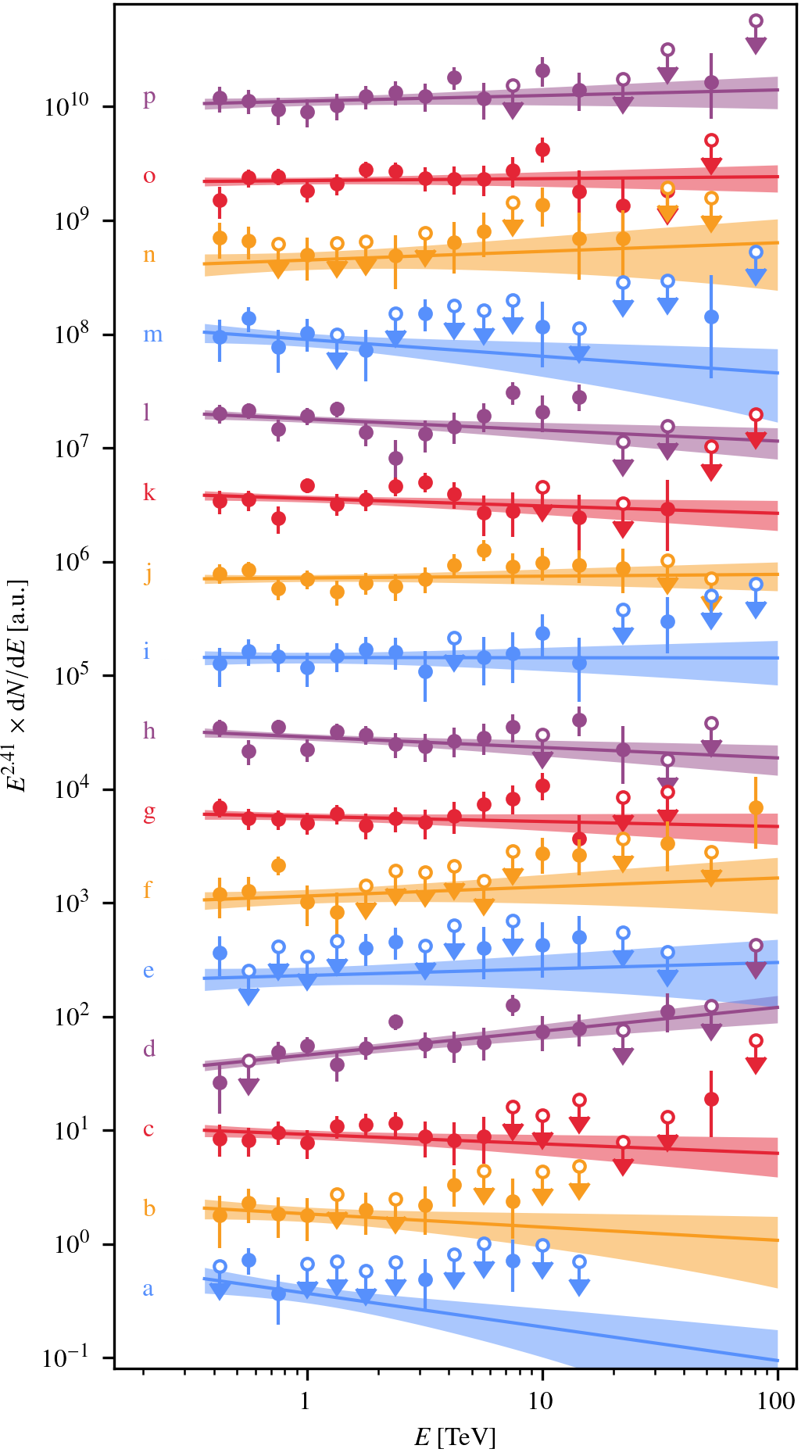
[PDF]
Figure 6
Signal region spectral index vs. distance.
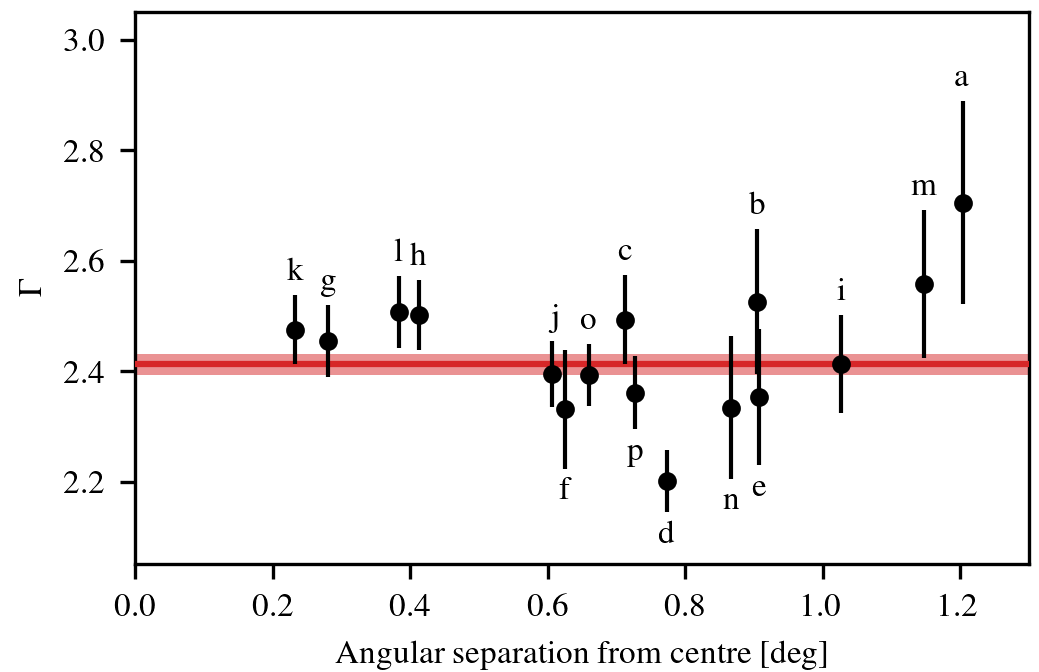
[PDF]
Figure 7
Combined energy spectrum.
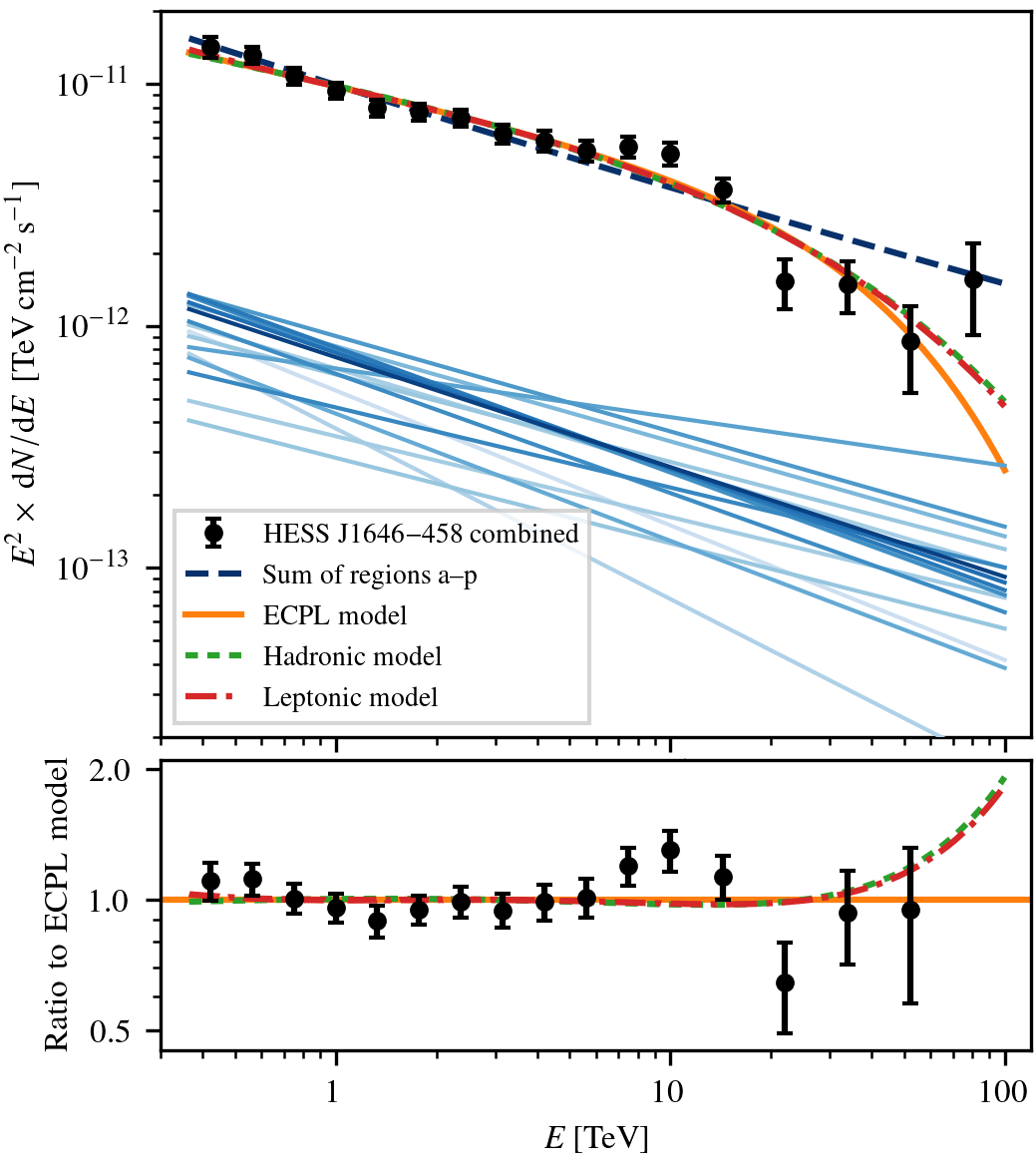
[PDF]
Combined flux points: (errors contain statistical uncertainties and a systematic uncertainty related to the hadronic background model)
ATTENTION: by mistake, the flux values in the table below were given in units of erg cm-2 s-1 instead of TeV cm-2 s-1. This has been corrected on October 6, 2023.
| Energy [TeV] |
Energy Flux [TeV cm-2 s-1] |
Energy Flux Error [TeV cm-2 s-1] |
| 0.422 |
1.42e-11 |
1.42e-12 |
| 0.562 |
1.31e-11 |
1.08e-12 |
| 0.75 |
1.08e-11 |
8.51e-13 |
| 1 |
9.38e-12 |
7.3e-13 |
| 1.33 |
7.94e-12 |
6.55e-13 |
| 1.78 |
7.66e-12 |
6.01e-13 |
| 2.37 |
7.23e-12 |
5.84e-13 |
| 3.16 |
6.22e-12 |
5.59e-13 |
| 4.22 |
5.82e-12 |
5.58e-13 |
| 5.62 |
5.29e-12 |
5.41e-13 |
| 7.5 |
5.48e-12 |
5.44e-13 |
| 10 |
5.16e-12 |
5.55e-13 |
| 14.3 |
3.64e-12 |
4.21e-13 |
| 22.1 |
1.53e-12 |
3.61e-13 |
| 34 |
1.48e-12 |
3.62e-13 |
| 52.3 |
8.67e-13 |
3.39e-13 |
| 80.6 |
1.55e-12 |
6.38e-13 |
Figure 8 / Figure B.1 / Figure B.2
H I and CO maps for different velocity intervals.
Figure 9
Cosmic ray density profiles.
Figure A.1
Prediction of Galactic diffuse emission from Picard code.
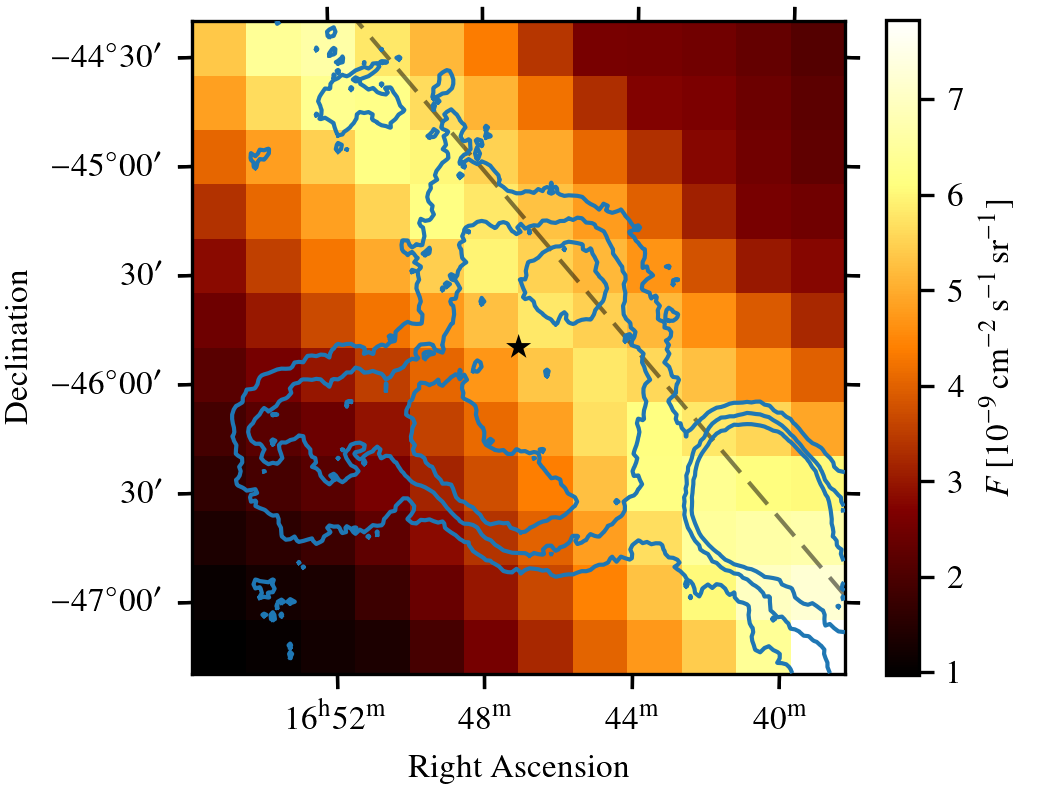
[PDF] [FITS]
Figure A.2
Flux maps after subtraction of Galactic diffuse emission.
Collaboration Acknowledgement
The support of the Namibian authorities and of the University of Namibia in facilitating the construction and operation of H.E.S.S. is gratefully acknowledged, as is the support by the German Ministry for Education and Research (BMBF), the Max Planck Society, the German Research Foundation (DFG), the Helmholtz Association, the Alexander von Humboldt Foundation, the French Ministry of Higher Education, Research and Innovation, the Centre National de la Recherche Scientifique (CNRS/IN2P3 and CNRS/INSU), the Commissariat à l’énergie atomique et aux énergies alternatives (CEA), the U.K. Science and Technology Facilities Council (STFC), the Irish Research Council (IRC) and the Science Foundation Ireland (SFI), the Knut and Alice Wallenberg Foundation, the Polish Ministry of Education and Science, agreement no. 2021/WK/06, the South African Department of Science and Technology and National Research Foundation, the University of Namibia, the National Commission on Research, Science & Technology of Namibia (NCRST), the Austrian Federal Ministry of Education, Science and Research and the Austrian Science Fund (FWF), the Australian Research Council (ARC), the Japan Society for the Promotion of Science, the University of Amsterdam and the Science Committee of Armenia grant 21AG-1C085. We appreciate the excellent work of the technical support staff in Berlin, Zeuthen, Heidelberg, Palaiseau, Paris, Saclay, Tübingen and in Namibia in the construction and operation of the equipment. This work benefited from services provided by the H.E.S.S. Virtual Organisation, supported by the national resource providers of the EGI Federation.
